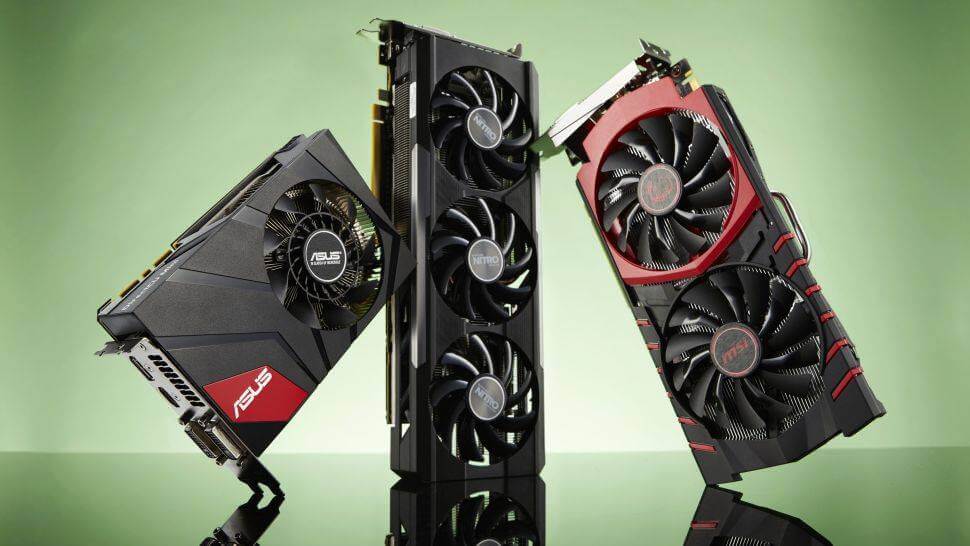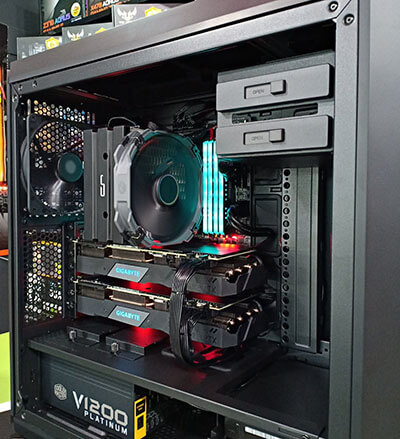Multiple graphics cards are preferable to a single one, just as two heads are always better than one.
The answer to your query is yes, there are a few methods by which you can utilize several graphics cards in one computer.
- One card may control the display(s), while others do general-purpose computing on graphics processing units. As long as competent drivers control each card, it doesn’t matter what class or manufacturer they come from.
- Multiple cards may be used to drive multiple displays, but each card must have its own drivers loaded if it is from a different family.
- To use Nvidia SLI, both cards must be the same model. It is possible to use AMD Crossfire with two different cards that are the same make and model.
Is it worth the effort to use two different GPUs for gaming?

Note that the second PCIe slot on a typical motherboard is only 8x capable. If two GPUs are installed, they will both operate at 8x PCIe mode, reducing their overall performance. The number of PCIe lanes must also be supported by your processor.
It’s likely that this is possible. Be aware that when a second GPU (also possibly x8, but I’m not researching up mobos on my phone at work sorry) is added, the top PCIe will drop to x8 mode on many motherboards. The GPU conducting the mining usually won’t notice any performance hit, but your main GPU could.
Inconsistent results are to be expected from various GPU drivers. If both cards can utilize the same one, that’s optimal (for AMD at least, current drivers usually cover every card going back something like 5 years or more, and potentially another year or two back for older top-end cards). Verify that Windows has designated the rendering GPU as the main VGA and that all displays are connected to that GPU (you’ll notice fairly quickly if the incorrect card is primary since your machine will operate like crap).
While it is technically possible to run games on one graphics card and movies or anything else on another, doing so is a tremendous hassle since games and other applications often do not allow you to designate which card they use to render and instead utilize whatever was primary when the program opened.
Slow performance is caused when rendering occurs on one card and is sent to a screen linked to a separate card. In most cases, the only time it makes sense to use several GPUs independently is if just one card is used for live rendering and the rest are only used for processing (crypto mining, protein folding, video encoding, etc).
Prerequisite for Using Two GPUs

Your computer requires AMD or Nvidia technology that bridges twin graphics cards into a single output in order to utilize them. CrossFire is AMD’s graphics technology, whereas SLI is Nvidia’s. All of these options need a computer with a motherboard that supports them and that has PCI Express graphics expansion slots.
In addition to a power supply capable of running multiple graphics cards, you’ll need a desktop case that’s big enough to accommodate the additional gear. A bridge connection, which may be either with the GPU or the motherboard, is required to connect the two cards together. The last step is to activate SLI or Crossfire inside the GPU driver settings menu.
Advantages
Having access to two graphics cards is mostly useful for boosting gaming performance. PC games benefit from greater frame rates, larger resolutions, and more filters when many GPUs are used to produce the same 3D pictures. The visual quality of games benefits from this additional capability. The maximum resolution supported by the majority of graphics cards is 1080p. Double the graphics processing power means you can play games on devices with four times the resolution, such as 4K monitors. Furthermore, several graphics cards may power extra displays.
Having a motherboard that supports SLI or Crossfire allows you to update your PC without having to swap out your graphics card. To further increase performance, you may install a second graphics card without replacing the current one. After two years, it may be difficult to obtain a suitable graphics card since manufacturers tend to change their products every 18 months.
Drawbacks

One major drawback of using two separate graphics cards is the additional expense they entail. Premium cards might set you back $500 or more. While both ATI and Nvidia offer cheaper dual-capable cards, the performance of a single high-end card may match or exceed that of two low-end GPUs.
Additionally, certain graphics engines may not perform well with two graphics cards, and not all games benefit from using multiple GPUs. Some games may even run worse than they did with just one graphics card. Stuttering may make a video game seem choppy.
Power consumption is particularly high for graphics cards. The power consumption of a computer may be multiplied by two when two graphics cards are installed and used simultaneously. It’s very uncommon for high-end graphics cards to have their own dedicated power supplies, with some models requiring as much as 850 watts to run.
The power supply on consumer computers often isn’t very powerful. Whether you want to know if your computer can support two graphics cards, check the power supply’s wattage and specifications.
The performance gains from using two cards in a single setup are context-dependent. If you have a low-end CPU, even the most powerful graphics cards in the world won’t be able to keep up with what they need. Only with high-end machines would we advise using two separate video cards.
Best Budget Cards on the Market Q4, 2022
Conclusion:
One last thing. First, examine the power supply unit to guarantee it can handle the load. Second, there will be a rise in temperature due to the higher power use. To maintain the same case temperature, the primary card will have to work harder since its fans will be partially obstructed by the card installed beneath it.
